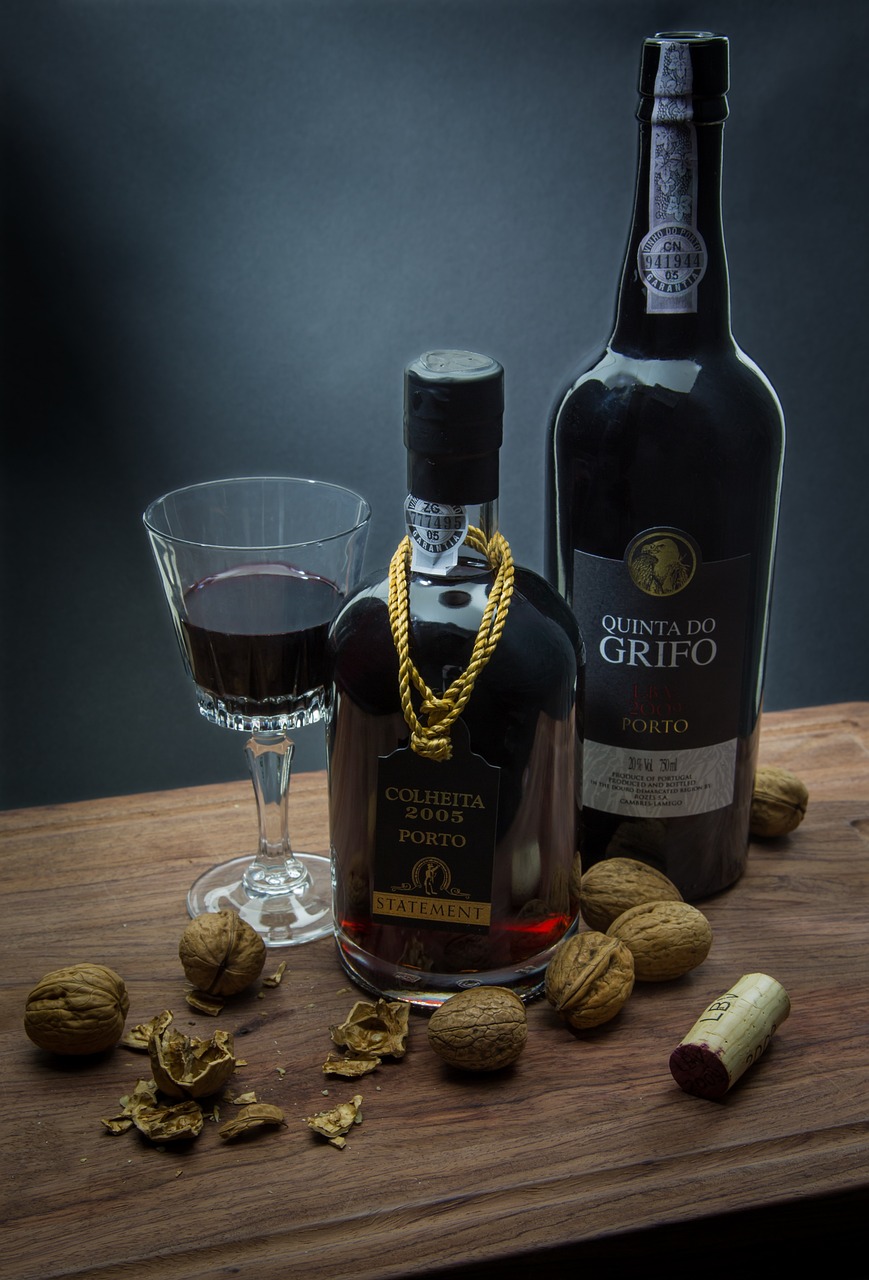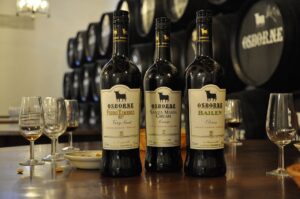Port wine is one of the world’s most famous fortified wines, originating from the Douro Valley in northern Portugal. Known for its rich flavors, intense sweetness, and high alcohol content, Port is a wine that ages beautifully and offers a wide range of styles.
For WSET Level 3 students, understanding Port wine is essential, as it involves unique production methods, a diverse range of grape varieties, and a classification system that determines quality and aging potential. This guide explores the regions, grape varieties, and wine styles that define Port wine.
The Douro Valley: Home of Port Wine
Port wine is exclusively produced in the Douro Valley, one of the world’s oldest wine regions. In 1756, it became one of the first demarcated and regulated wine regions, ensuring quality and authenticity.
Sub-Regions of the Douro Valley
The Douro Valley is divided into three key sub-regions, each with its own climate and soil characteristics:
Baixo Corgo
The coolest and wettest sub-region, closest to the Atlantic Ocean.
Produces lighter, fruitier Ports.
Often used for Ruby and young Tawny Ports.
Cima Corgo
The heart of Port production, with a warmer climate and steeper slopes.
Produces high-quality Ports, including Vintage and Late Bottled Vintage (LBV) Ports.
Key town: Pinhão, home to many of the top Port houses.
Douro Superior
The hottest and driest sub-region, near the Spanish border.
Produces powerful and structured wines.
Increasingly used for premium Ports and dry red wines.
Grape Varieties Used in Port Wine
Port is traditionally made from a blend of local Portuguese grape varieties. The five most important are:
1. Touriga Nacional
Considered the finest grape for Port.
Produces deep-colored, full-bodied wines with intense black fruit flavors.
Adds structure and aging potential.
2. Touriga Franca
The most widely planted variety in the Douro Valley.
Adds floral aromas, soft tannins, and elegance.
Often blended with Touriga Nacional for balance.
3. Tinta Roriz (Tempranillo)
Known as Tempranillo in Spain.
Brings red fruit flavors and finesse.
Helps add acidity and structure to blends.
4. Tinta Barroca
Produces smooth, easy-drinking Ports.
Lower acidity and tannins, contributing softness and fruitiness.
5. Tinto Cão
A low-yielding variety that adds freshness and longevity.
Used in high-quality Ports due to its excellent aging potential.
While these five are the most important, over 80 different grape varieties are permitted in Port production.
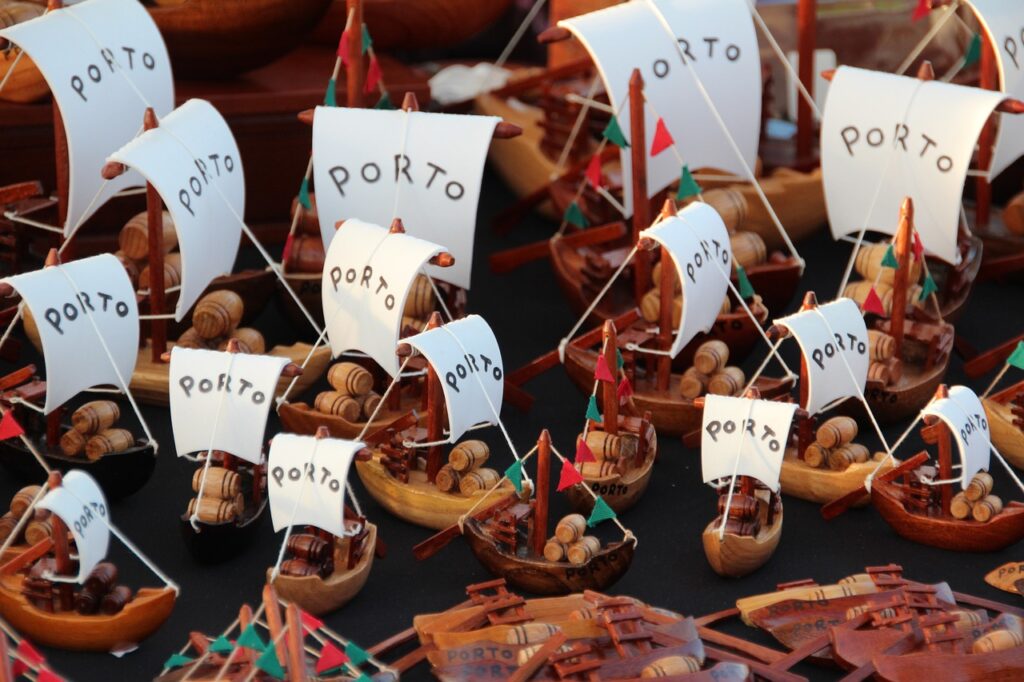
How Port Wine is Made
Port is a fortified wine, meaning that grape spirit (aguardente) is added during fermentation. This process stops fermentation early, leaving residual sugar and increasing the alcohol content to 19-22% ABV.
Key Steps in Port Production:
Harvesting – Grapes are hand-picked due to the steep terraces of the Douro Valley.
Fermentation – Begins like regular wine but is stopped after 2–3 days.
Fortification – Grape spirit is added to retain sweetness and alcohol.
Aging – The wine is aged in barrels, vats, or bottles, depending on the style.
Port Wine Styles
Port wine is classified based on aging methods, color, and sweetness levels. There are two main categories:
1. Ruby Ports (Fruit-Forward and Vibrant)
Ruby Ports are aged in large tanks to preserve their fresh fruit character and deep color.
a) Ruby Port
Young, vibrant, and fruity.
Aged for 2–3 years before bottling.
Flavors of red berries, plums, and spice.
b) Reserve Ruby Port
A higher-quality Ruby Port with more aging.
Aged for 4–6 years for extra complexity.
c) Late Bottled Vintage (LBV) Port
From a single vintage, aged 4–6 years before bottling.
Offers intense fruit flavors with some maturity.
Can be filtered (ready to drink) or unfiltered (benefits from decanting and aging).
d) Vintage Port
The highest-quality Ruby Port, only made in exceptional years.
Aged for 2 years in barrels, then bottled unfiltered for long aging.
Can mature for decades, developing notes of dried fruit, chocolate, and spice.
2. Tawny Ports (Nutty and Oxidized)
Tawny Ports are aged in smaller barrels, allowing oxidation to develop nutty and caramelized flavors.
a) Tawny Port
Aged for a short period (around 3 years).
Lighter color and smoother texture than Ruby Port.
b) Aged Tawny Ports (10, 20, 30, 40 Years Old)
Blends of different vintages, aged in barrels for extended periods.
Develop nutty, caramel, and dried fruit flavors.
c) Colheita Port
A single vintage Tawny Port, aged in barrels for at least 7 years.
Offers a balance of fresh fruit and oxidative complexity.
3. White and Rosé Ports
a) White Port
Made from white grape varieties like Malvasia Fina and Gouveio.
Styles range from dry to sweet, with notes of citrus, nuts, and honey.
b) Rosé Port
A modern style made by minimal skin contact with red grapes.
Fresh and fruity with strawberry and raspberry flavors.
Food Pairing with Port Wine
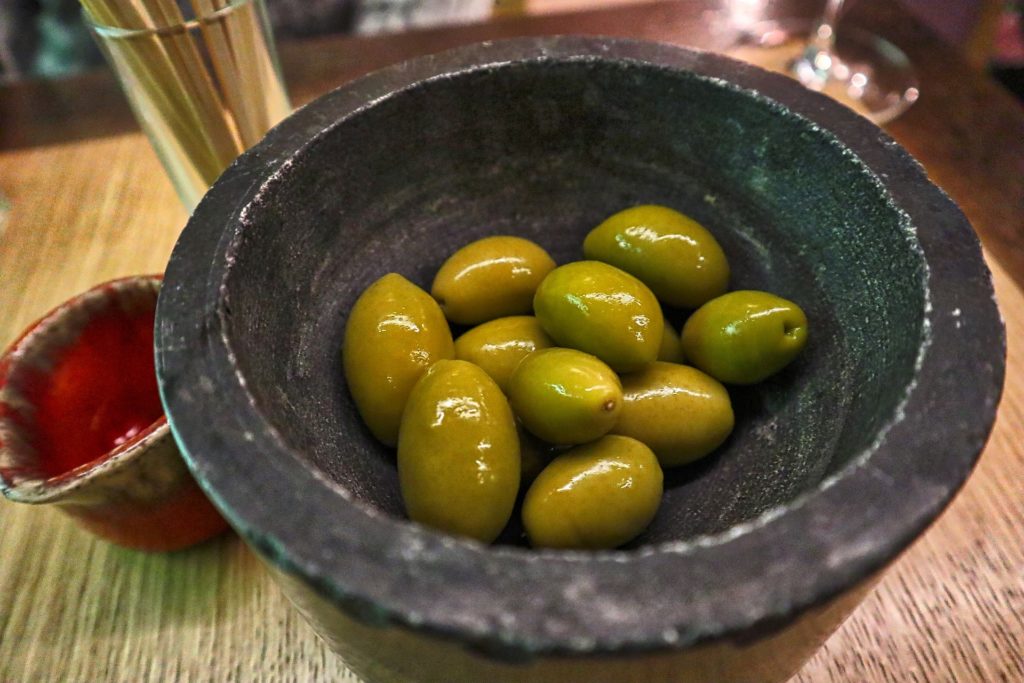
Port’s sweetness and high alcohol make it ideal for pairing with a variety of foods:
Ruby & LBV Port → Dark chocolate, berry desserts, blue cheese.
Vintage Port → Stilton, walnuts, roasted meats.
Tawny Port → Caramel desserts, nuts, aged cheese.
White Port → Salty snacks, almonds, tonic water (for a refreshing cocktail).
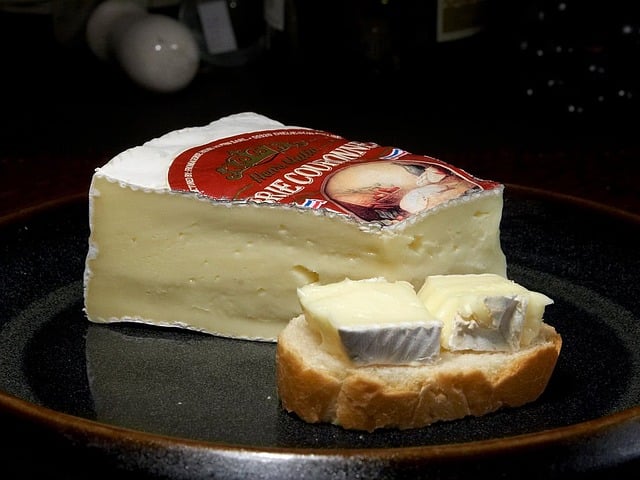
Port is a crucial topic for WSET Level 3 because of its unique fortification process, diverse styles, and aging potential. Understanding Port helps students appreciate sweet wines, oxidative aging, and the impact of terroir.
Port wine is a historic and complex fortified wine that showcases the richness of the Douro Valley. From fruit-forward Ruby Ports to nutty, long-aged Tawny Ports, there is a style for every wine lover. For WSET Level 3 students, mastering Port’s grape varieties, production techniques, and classifications is essential for a deeper understanding of fortified wines.

